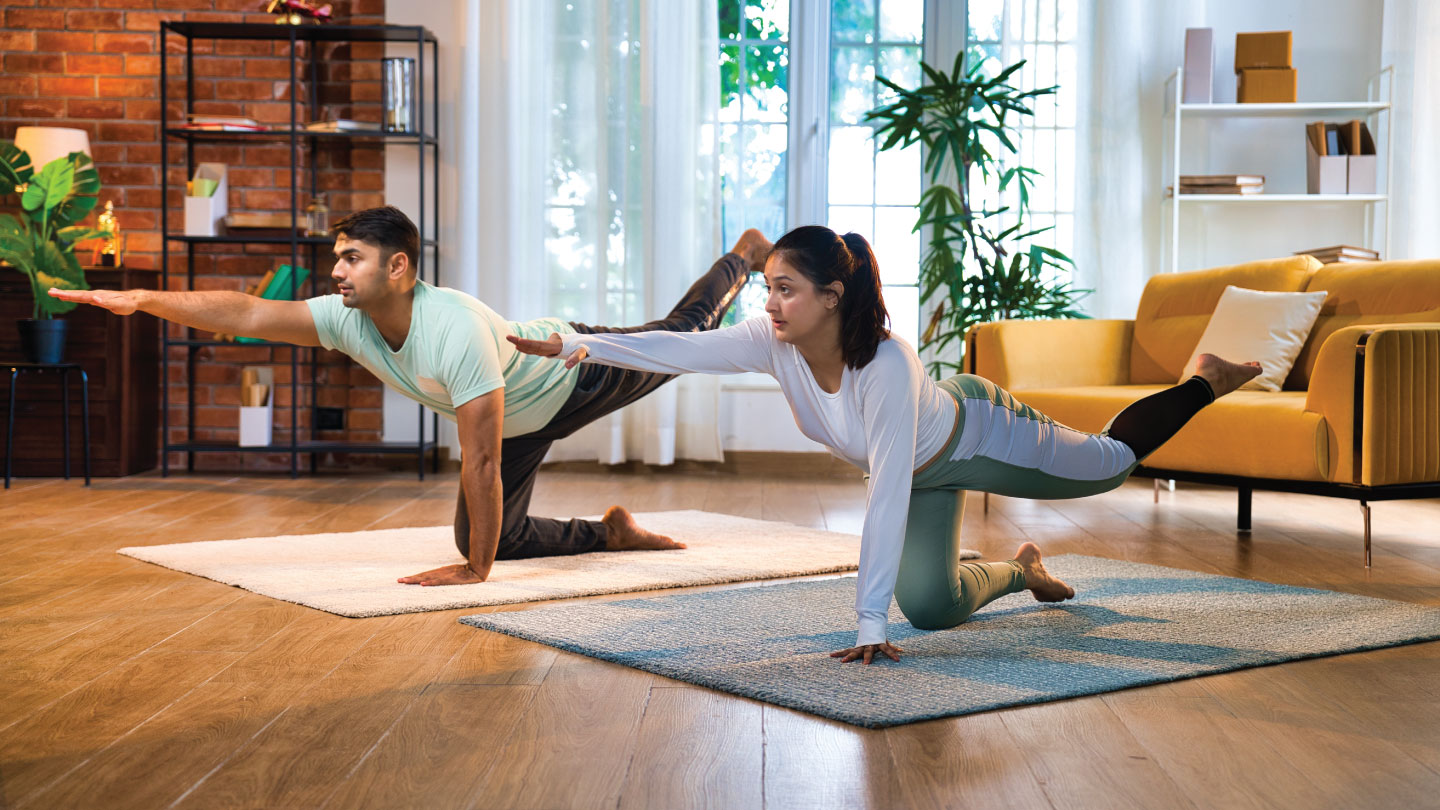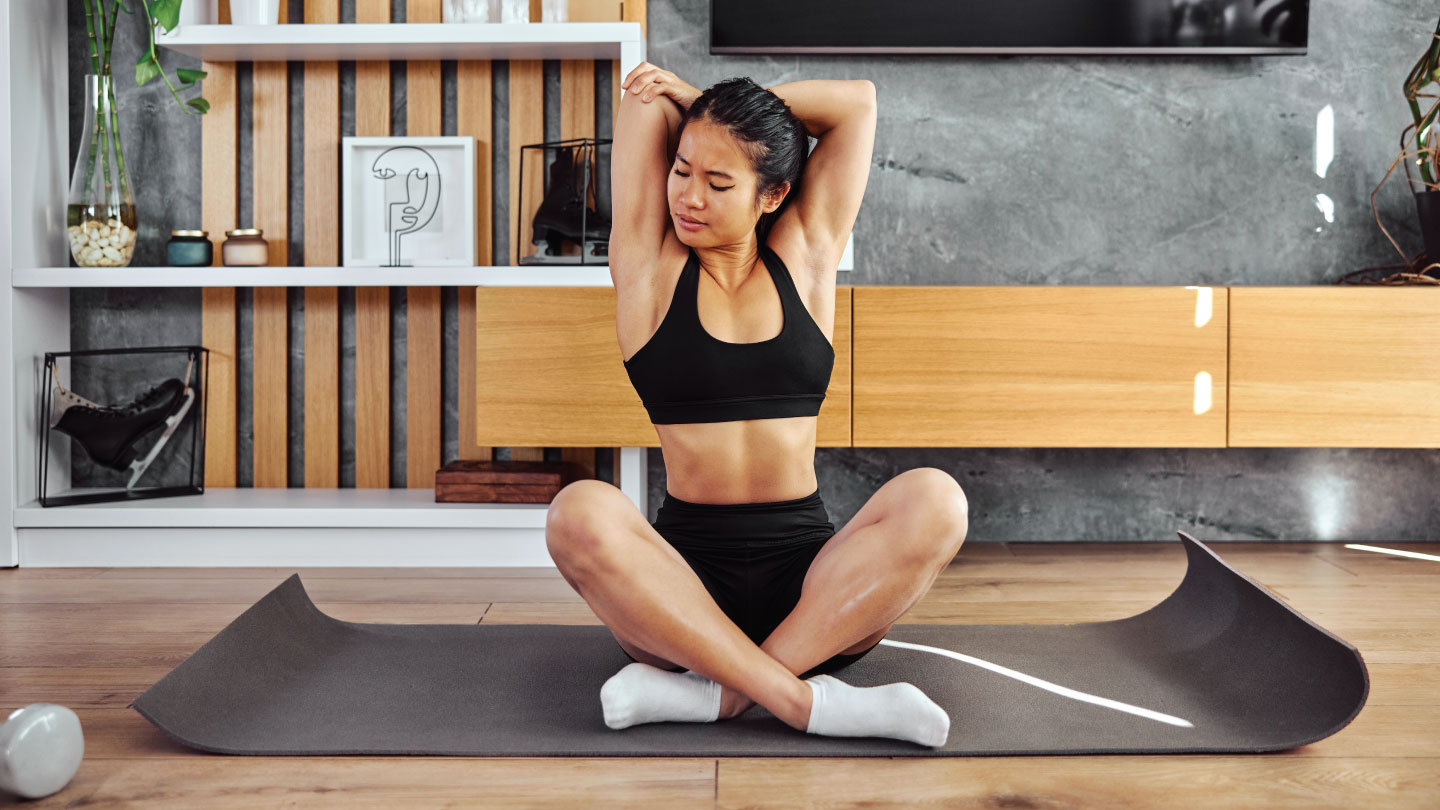Movement
5 Easy Pregnancy Exercises To Ease Back Pain
As your belly grows, so does the backache. If you also experience twinges or severe back aches in your pregnancy, then we have got your back! Try these pregnancy exercises to strengthen back muscles and effectively ease back pain in no time.
.jpg)
Back pain is one of the most commonly reported issues among expectant women. As per a 2022 study published in the Journal of Personalised Medicine, nearly 60 per cent of pregnant women around the world experience back pain and for some, the pain continues postpartum. Although in most cases the pain is mild, one-third of women suffer severe pain.
Back pain during pregnancy can be debilitating and can adversely affect daily activities—obstructing walking, standing, lifting bags or a child. Besides, your body is undergoing immense physical change every week, so it’s possible to sustain a backache as your belly grows with each semester.
Need all your wellness solutions in one place? A whole new world awaits just a click away.
Causes of Pregnancy Back Pain
The causes of back pain in pregnancy stem from several factors:
- Muscle detachment: As the uterus expands, the rectus abdominal muscles (six-pack abs muscles) may separate along the centre seam. This separation may worsen back pain.
- Weight gain: During pregnancy, most women generally gain between 11 and 15 kilos. In such conditions, the spine has to support the weight of the growing foetus and uterus which puts pressure on the blood vessels and nerves in the pelvis and back.
- A shift in centre of gravity: During pregnancy, the body starts to adjust postures and the way you move, which results in pain. As the foetus grows and its weight increases, it takes up more space in the belly and moves the centre of gravity forward. A woman’s body adapts to this shift by hyper-extending the lower spine in an excessive forward curve. In the later trimester, the weight of the embryo pushes the lumbar curve causing painful knots in the back muscles.
- Hormone changes: When pregnant, your body makes a hormone called relaxin, which causes ligaments to loosen and relax. During delivery, relaxin allows the pelvis to stretch and accommodate the passage for the baby’s head—whereas, during the pregnancy, relaxin can cause ligaments that support the spine to loosen, contributing to distress, instability, and pain in the pelvis and lower back.
- Stress: Emotional strain can cause muscle tension in the back, which may be felt as back pain or back cramps. Due to this, some women may experience increased back pain during their pregnancy.
We spoke to Dr. Vinodha Vunnam, a pre and post-natal physiotherapist, birthing therapist, lactation consultant, and co-founder of Happy Mom about pregnancy workouts. She says, “during pregnancy certain activities such as exercise, lifting a bag or a child (if you already have one), accomplish household chores, sit for prolonged periods and sleep properly can affect your physical well being. It is important to listen to your body and do gentle movements that do not strain your back. Every pregnancy is unique. While staying active during pregnancy benefits the mom and the baby, it is essential to check with your doctor before changing your activity levels.”
Dr. Vinodha suggests consulting an obstetrician before commencing any exercise as proper guidance and physio modification may be required as per capability and medical conditions.
Related story: Pregnancy Exercises You Can Do At Your Desk
How To Exercise During Pregnancy?
Regular exercise during pregnancy is safe and may help reduce back pain. Exercise in the prenatal period may help control gestational diabetes and promote healthy weight gain. It has a ton of benefits for you and the baby. While exercise is safe and beneficial, you do want to be mindful of the intensity and type of exercise, duration, and temperature, as well as your baseline exercise habits prior to becoming pregnant. aim for 20-30 minutes of moderate-intensity physical activity per day, such as walking, swimming, prenatal fitness, and prenatal yoga.
Here are some workouts that Dr. Vinodha has shared that can help prevent back aches from becoming severe.
Related story: How Much Physical Activity Is Ideal For Pregnant Women
1. Bridge

- On a mat, lie on your back, rest your hands at your sides, bend your knees, and place feet flat on the floor, beneath your knees.
- Tighten your abdomen and squeeze your buttock muscles by pushing your low back into the ground.
- Raise your hips to create a straight line from your knees to your shoulders. Compress your gut and pull your belly button back toward your spine.
- Hold for 20 to 30 seconds. Lower the hips to return to the starting position. Repeat 3 sets in 5 repetitions.
Strengthens the erector spine, stabilises hip abductors, gluteus maximus, and hamstrings and relieves back pain.
Related story: 8 Simple Chair Yoga Poses To Recharge Your MInd And Body
2. Bird Dog

- Get on all four limbs on a yoga mat. Align wrists under shoulders and knees in line with hips.
- Extend the left arm out in front. Then extend the right leg behind, forming a straight line running from your tailbone to your head.
- Make sure hips are parallel to the floor and do not dip at the lower back.
- Extend both arm and leg out for two seconds before bending them back into the starting position. Keep the core intact to avoid the instability of the body.
- Repeat 3 sets in 10 repetitions on each side.
Targets back muscles, promotes core stability and introduces gentle movement into the shoulder and hip joints.
Related story: 10 Minutes Yoga Asanas For Back Pain
3. Downward Dog

- On the mat, place your hands and knees in table-top position. Place your hips directly over your knees, and your shoulders over your wrists, and place your hands shoulder-width apart.
- With your wrists parallel to the front edge of your mat, and spread your fingers wide. Grip the mat with your fingertips, similar to a cat digging claws into the mat.
- Push the back of your legs and lift a little up onto the balls of your feet. Keep your arms straight and engaged without locking your elbows.
- Raise your hips high towards the ceiling or sky without moving your hands or feet and lengthen your heels back onto the floor.
- Keep your head between your upper arms.
- Stay in the pose for at least 10 seconds. Slowly, bend your knees to lower yourself back into the table position.
Targets the upper body, arms, shoulders, abdomen, and legs. It stimulates blood circulation.
Related story: Find Out How To Perfect The Downward Dog Posture
4. Child’s Pose

- Kneel on a yoga mat and sit on your heels with your arms at your sides.
- Slowly lean forward, and ensure your stomach touches your thighs. Try to keep your buttocks against your heels.
- Stretch your hands in front of you with your palms on the floor.
- Let your forehead gently relax against the mat.
- Allow your entire body to relax as you close your eyes and breathe. Remain in this posture for as long as you feel comfortable. Gradually return to the seated pose.
Relieve any tension in your back muscles, and pelvis and relieve constipation.
Related story: Here's Why Your Pelvic Floor Needs Attention ASAP, According to Women's Fitness Expert
5. Pelvic Tilt (On All Four)

- Start on all fours with hands under shoulders and knees under hips. Make sure your wrists are aligned with your shoulders and your knees with your hips. Your pelvis should be neutral.
- Now, tuck your bottom down so that you arch your back, and tuck your chin into your chest.
- Inhale. Exhale to engage the core and pelvic floor, creating a feeling that you’re lifting and tucking your pelvis to bring the public bone toward your ribcage.
- Hold for a few seconds, and then slowly straighten your spine, returning to the original position.
Strengthens your abdominal muscles, and helps relieve sciatica and low back (lumbar) pain.
Related story: 6 Moves To Ease Back Pain
Things To Look Out For When Exercising
Pregnancy exercises will help you ease to serve you from the beginning of the pregnancy till labour and even this postnatal period.
- For any pregnancy exercise, it’s best to clear any regimen with your physician first.
- Anyone with a spinal disorder should avoid these pregnancy exercises.
- To learn correct body positioning and form, consider working with a physical therapist, who can demonstrate and correct your posture during exercise.
- If you experience any pain or discomfort while doing these exercises stop immediately.
Need all your wellness solutions in one place? A whole new world awaits just a click away.
EXPLORE MORE
Simple, practical fitness advice to help you feel stronger, healthier, and more consistent in 2026.
Callisthenics isn’t about flashy Instagram moves or avoiding the gym. According to celebrity fitness and lifestyle coach Krishna Sadvale, it’s one of the most practical ways to build strength, control, and confidence in your own body.
A home-based yoga routine can elevate energy, sharpen focus, and nurture mental calm. Discover why it’s worth starting now.
Your posture is whispering a story about stress, screens, and slouching. Here are 6 exercises you must try!






.jpg)
.jpg)


